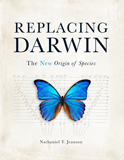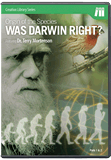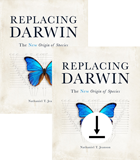
Kind, Species, and What’s in a Name?
How biblical kinds differ from modern species, a history of speciation models, and why the biblical model better explains the natural world
“How could Noah fit all the species on the Ark?” Ever heard that skeptical question before? Turns out, it’s the wrong question to ask because it confuses the term species with the more biblical term kind. So, what’s the difference? The answer is: it’s complicated.
First, a Little Bit of History
When Carl Linnaeus formulated the modern taxonomic system in the 1700s, he did so in Latin. Species is a Latin word. It means “kind.” Linnaeus was attempting to describe the biblical kind with his term species.1 While Linnaeus was wrong about the taxonomic level of species initially, by the end of his life, he had moved his “kind” level to a position virtually indistinguishable from that of modern creationists.2 However, his mistake has caused generations of confusion about species and kinds.
Since they mistakenly believe we are in the seventh day of God resting from His creation, they are compelled to believe new species cannot form today. In so doing, they hand the atheists a stick to beat them with.
While Linnaeus’ changed his view before the end of his life, if you pick up an evolutionary textbook today, you will almost invariably see that creationists are straw manned as believing that species are fixed.3 The misconception is reinforced by many of the old earth compromisers claiming each species was created by God.4 Since they mistakenly believe we are in the seventh day of God resting from His creation, they are compelled to believe new species cannot form today. In so doing, they hand the atheists a stick to beat them with.
Biblical compromise aside, it is important to ask what is meant by the term “species.” Science has struggled mightily to pick a consistent species concept. One Australian professor who has written extensively on the topic counted as many as twenty-seven species definitions in the literature and jokingly added “there are n+1 definitions of “species” in a room of n biologists.”5 A more recent article quoted a biologist who had counted up thirty-two concepts of what a species is.6 This problem is well known by scientists in the literature and frequently discussed. However, there are some commonly used species concepts that are familiar to most biologists.
Speciation According to Mayr
The species concept we all were taught in our high school biology class originated with Ernst Mayr. Mayr, a biologist who worked at Harvard for decades, proposed the biological species concept in 1942. According to Mayr,” “Species are “groups of actually or potentially interbreeding natural populations which are reproductively isolated from other such groups.’”7 In other words, species to Mayr were reproductive groups.
Mayr was convinced that species were the fundamental unit of nature.8 He felt that evolution needed species to work, even calling species “the keystone of evolution.”9 Other later biologists have squabbled over this understanding of species. One biologist argued that species are not in any way real, and life is organized into monophyletic groups that may or may not correspond to the species classification.10
Phylogenetic Concept of Species
The idea that species are not biological entities goes hand in hand with another popular concept of species, the phylogenetic species concept. Phylogenetic species are defined as “the smallest aggregation of populations (sexual) or lineages (asexual) diagnosable by a unique combination of character states in comparable individuals.”11 Here a species is defined by looking for organisms with a set of unique traits at the finest scale possible. Reproduction ability is completely ignored here. The only thing that matters is finding groups with unique sets of traits.
The problem with the phylogenetic concept of species is that speciation events are not always binary. Phylogenetics assumes that bifurcation on the phylogenetic tree is the method of species formation. However, reticulation (the origination of a lineage through the partial merging of two ancestor lineages) is common in some lineages, making a bifurcating tree unlikely in some cases.12 Further, speciation reversal is known to occur periodically, which invalidates the automatic assumption of bifurcation.13 This raises significant questions about the validity of any phylogenetic species concept.
Genetic Clustering Concept of Species
A third set of species concepts is the genetic clustering concept. The genetic clustering species concept essentially calls organisms in clusters of genetic similarity a species.14 These clustering models are popular with evolutionary biologists and are often used for various models of population genetics.15 The problem is, clustering is arbitrary. There is no empirical way to determine where one cluster ends and another begins. Often we can recognize clusters on sight, but often this depends on the scale at which they are being observed. Regardless, clustering concepts are largely arbitrary. Evolutionary concepts of a species seem to lack uniformity and come with significant issues.
Creation-Driven Species Concepts
Creationists have proposed their own concepts of species as well, including several quite recently. Based on statistical baraminology (which has its own significant problems16), one creationist has proposed the minimal discontinuity species concept, which he defined as “: Species are population sets of organisms within baramins that partition a baramin’s character space into persistent, restricted regions of continuous phenotypic variation separated by minimal discontinuity (i.e., non-holistic, non-significant difference).”17
Creationists have proposed their own concepts of species as well, including several quite recently.
This concept is significantly better than most evolutionary concepts and rightly critiques many of the evolutionary concepts. However, it is hobbled by assuming the extra-Biblical, and logically fallacious discontinuity criterion at the outset. Without getting into too much detail here, discontinuities’ presence is assumed to define the boundaries of baramins. This is akin to saying that because the streets are wet, it must be raining. Of course, this is wrong because a child could be playing with a garden hose, or a water main could be broken. Both of those would also explain why the street is wet. In the same way just because we expect discontinuity at the edge of a baramin (which we do), does not mean that when we find it, we have found the edge of a baramin. There could be other reasons for discontinuity, or we could be looking at too fine a scale.
Another concept proposed in the creationist community is termed the katagenos species concept. This concept views species “as a breed within a kind with a specific set of reproductively connected surface characteristics that produce a recognizable pattern. It is able to reproduce with others of the same species and potentially able to hybridize with other breeds/species within a kind.”18 It is simple has some untapped potential, but lacks the ability to deal with pure asexual organisms like bacteria, or some plant lineages, at least as currently formulated.
It should be apparent just from the above section that species is a difficult concept to nail down or even fully define.
It should be apparent just from the above section that species is a difficult concept to nail down or even fully define. Many informed evolutionists know this and, when they interact with creationists, often try to use a “you too” response by claiming that creationists cannot define what a kind is. However, making such a claim reveals a fundamental ignorance of creationist literature. Creationists have been dealing with this question since at least the early 1940s when the father of baraminology, Frank Marsh, began publishing and coined the phrase “baramin.”19 Marsh viewed the baramin as the fundamental unit of nature, in opposition to Mayrs view.20 To Marsh, true fertilization was the way to determine of two species were of the same baramin.
In contrast to Marsh, some more recent creationist thought has both expanded the ways of determining what a baramin is, as well as accepted Mayr’s argument for species reality.21 The commonly held definition of a baramin today is “the actualization of a potentiality region at any point or period in history (including but not limited to all of history).”22 The idea here is that every character trait can be viewed as a point in 3D space. Groups of characters are contained in what is termed “potentiality regions.” Each potentiality region has the potential to contain a baramin. However, this definition completely ignores the Biblical text. A more recent definition refines this concept even further and defines a baramin as “the smallest, persistent, distinct, recognizable group of organisms surrounded by significant holistic discontinuity.”23 By significant holistic discontinuity, it means that the data used is holistic, covering large amounts of different types of data and that the results are statistically significant. However, this remains completely divorced from the Biblical text.
Ark Kinds Study and Speciation
A more Biblically faithful version of the kind comes from the Ark kinds study. In reference to the Hebrew word translated kind, it is defined as “distinct groups of animals and strongly implying that reproduction occurs within these groups.”24 In other words, the kind is a reproductive group composed of distinct, discrete organisms.
In other words, the kind is a reproductive group composed of distinct, discrete organisms.
Hopefully by now the difference between species and kind is clear. A kind is a Biblically based taxonomic grouping based on reproduction. On the Linnean scale, the current consensus is that a baramin is approximately equivalent to the family level, but kinds both above and below that level exist. The created kind was made to reproduce, according to Scripture, and thus should be able to exchange genes either by reproduction, horizontal gene transfer, or environmental uptake.
A species is a much more tightly clustered group than a kind. No one seems to quite know what it is, but there is a general consensus that the organisms in a species are closely related, live and breed with one another, and are roughly morphologically similar to one another.
A species is a much more tightly clustered group than a kind. No one seems to quite know what it is, but there is a general consensus that the organisms in a species are closely related, live and breed with one another, and are roughly morphologically similar to one another. However, even the evolutionists acknowledge that there is a larger group around species that contain species. One evolutionist, writing before creation science took off in the 1960s, pointed out that taxonomists had noted “any one supraspecific taxon up to about the categorical level of family tends to have fairly uniform adaptive facies, often recognizable to taxonomists at a glance.”25 In other words, up to the family level, groupings are usually very recognizable.
Conclusion: The Biblical Model Better Explains Natural World
So the difference between species and kind effectively comes down to difference between a Biblical model and man-made one. The Biblical model views the kind as a morphologically distinct, reproductive unit. The modern species model, whichever one happens to be in use, is beset with problems, and completely lacks the consensus that is usually touted by evolutionary biologists. The Biblical model makes far better sense of the available data and provides a framework through which to understand the natural world.
Answers in Depth
2022 Volume 17
Answers in Depth explores the biblical worldview in addressing modern scientific research, history, current events, popular media, theology, and much more.
Browse VolumeFootnotes
- Carl Linnaeus, Philosophia Botanica, trans. Stephen Freer (Oxford University Press, 2003), 113.
- Per Landgren, “On the Origin of ‘Species’: Ideological Roots of the Species Concept,” in Typen des Lebens, edited by Siegfried Scherer (Berlin Pascal-Verlag, 1993), 47–64.
- Jon C. Herron and Scott Freeman, Evolutionary Analysis (Glenview, IL: Pearson Education, 2014).
- Hugh Ross, “Why So Many Species?,” Reasons to Believe, November 1, 2012, https://reasons.org/explore/publications/nrtb-e-zine/why-so-many-species.
- John Wilkins, “How Many Species Concepts Are There?,” The Guardian, October 20, 2010, https://www.theguardian.com/science/punctuated-equilibrium/2010/oct/20/3.
- Susan Milius, “Defining ‘Species’ Is a Fuzzy Art,” Science News, November 1, 2017, https://www.sciencenews.org/article/defining-species-fuzzy-art.
- Ernst Mayr, Animal Species and Evolution (Cambridge, MA: The Belknap Press of Harvard University, 1965), 20.
- Ernst Mayr, “What Is a Species and What Is Not?,” Philosophy of Science 63, no. 2 (1996): 262–277, http://mechanism.ucsd.edu/teaching/philbiology/readings/mayr.whatisaspecies.1996.pdf.
- Mayr, Animal Species and Evolution, 621.
- Brent D. Mischler, “Species Are Not Uniquely Real Biological Entities,” in Contemporary Debates in Philosophy of Biology, eds. Francisco J. Ayala and Robert Arp (Oxford: Blackwell Publishing, ltd, 2010), 110–122, https://joelvelasco.net/teaching/systematics/Mishler%202010%20(Arp%20&%20Ayala).pdf.
- Kevin C. Nixon and Quentin D. Wheeler, “An Amplification of the Phylogenetic Species Concept,” Cladistics 6, no. 3 (1990): 211–223, https://onlinelibrary.wiley.com/doi/pdf/10.1111/j.1096-0031.1990.tb00541.x.
- James Mallet, Nora Besansky, and Mattew W. Hahn, “How Reticulated Are Species?,” BioEssays 38, (2015): 140–149, https://onlinelibrary.wiley.com/doi/pdf/10.1002/bies.201500149.
- Shripathi Bhat et al., “Speciation Reversal in European Whitefish (Coregonus lavaretus (L.)) Caused by Competitor Invasion,” PLoS One (March 13, 2014): https://journals.plos.org/plosone/article?id=10.1371/journal.pone.0091208.
- Jaimie Murdock and Larry S. Yaeger, “Identifying Species by Genetic Clustering,” in Proc. 20th European Conf. on Artificial Life (ECAL), 565–572, https://citeseerx.ist.psu.edu/viewdoc/download?doi=10.1.1.655.6163&rep=rep1&type=pdf.
- G.P. Saetre and M. Ravinet, Evolutionary Genetics (New York: Oxford University Press, 2019).
- See Sanders and Cserhati in the upcoming issue of CRSQ for a full breakdown.
- Roger W. Sanders, “Minimal Discontinuity Species Concept: a Practicing Taxonomists’ Attempt to Understand Species in the Context of Baraminology,” JCTS Series B 11, (2021): 10–26.
- Todd Elder, Elder’s Model of Created Kinds 17 (2019): https://inhisimagedotblog.files.wordpress.com/2019/12/eldersmodelarc.pdf.
- Frank L. Marsh. Fundamental Biology (Lincoln, NE, self-published, 1941), 100.
- Frank L. Marsh. Variation and Fixity in Nature (Omaha, NE; Pacific Press Publishing Association, 1976).
- Kurt P. Wise, “Species as Brushstrokes: the Relevatory Species in Creationism,” JCTS Series B 11, (2021): 27–41.
- Todd Charles Wood et al., “A Refined Baramin Concept,” Occasional Papers of the Baraminology Study Group 3 (2003): 1–14, https://www.academia.edu/3354097/A_revised_baramin_concept.
- Wise, “Species as Brushstrokes.”
- Georgia Purdom et al., “Determining Ark Kinds,” Answers Research Journal 4, (2011): 195–201, https://answersresearchjournal.org/determining-the-ark-kinds/
- George Gaylord Simpson, Principles of Animal Taxonomy (New York: Columbia University Press, 1961), 200.
Recommended Resources

Answers in Genesis is an apologetics ministry, dedicated to helping Christians defend their faith and proclaim the good news of Jesus Christ.
- Customer Service 800.778.3390
- © 2024 Answers in Genesis




